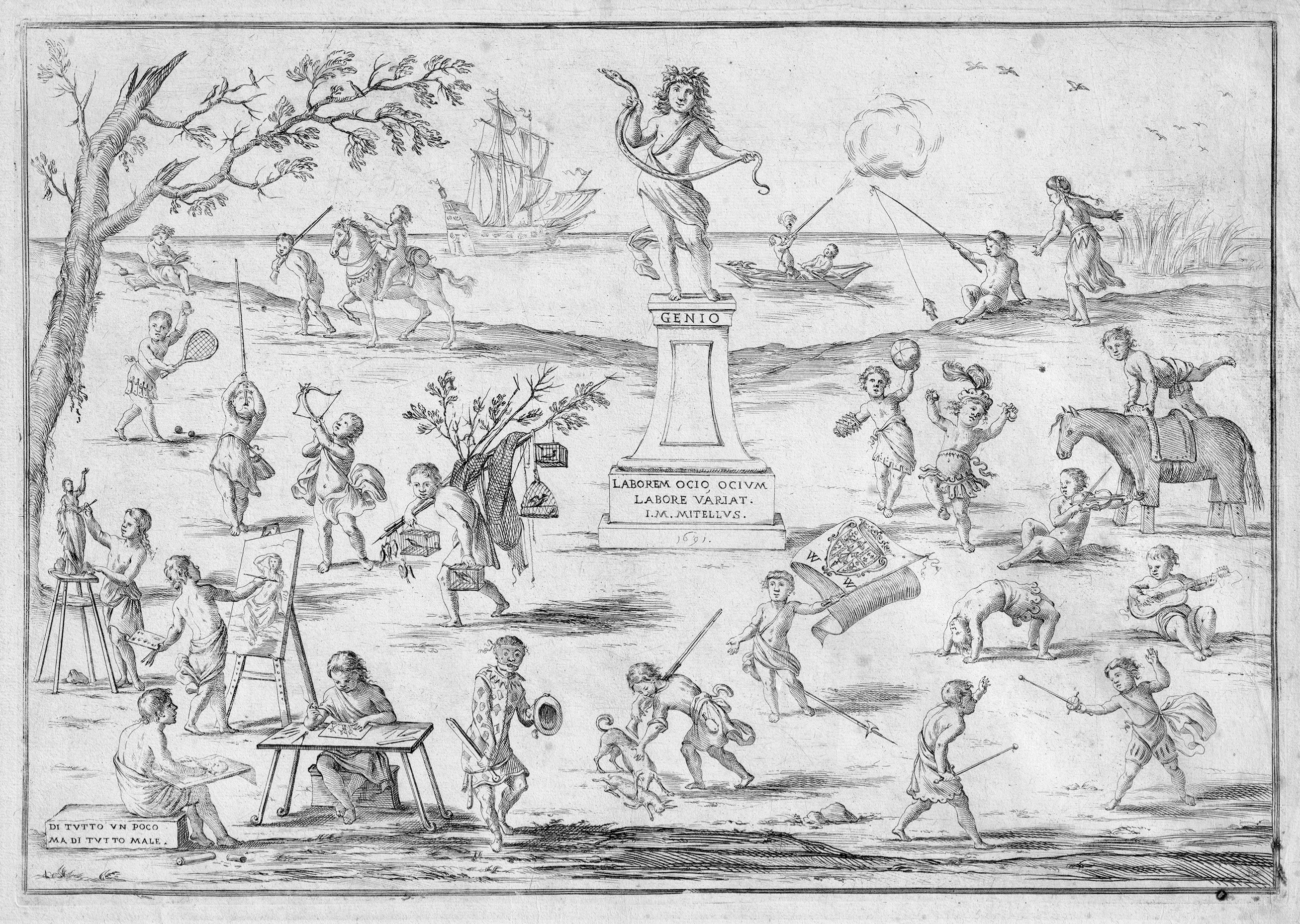Loading the page ...
Giuseppe Maria Mitelli
(1634–1718, Bologna)
Genio. Laborem ocio, ocium labore variat. Etching. 31.6 x 45.1 cm. 1691. Bertarelli 323; Varignana 404. Watermark: Fleur-de-lis.
The painter, draughtsman and printmaker, Giuseppe Maria Mitelli, was apprenticed to the cream of Bologna’s artists, being taught by no less than Guercino, Francesco Albani and Simone Cantarini. Nowadays Mitelli is best known for his etched genre scenes and caricatures, being regarded as one of the foremost representatives of moralising genre printmaking in 17th century Italy. His substantial printed oeuvre is distinguished by the originality of his invention and his biting satire.
The theme of this entertaining print is the constant alternation between work and idleness in the life of an artist. At the centre of the composition stands the statue of Genio taming a snake, the traditional symbol of seduction and vice. The pedestal bears the inscription: LABOREM OCIO, OCIUM / LABORE VARIAT. / I. M. MITELLUS (work alternates with idleness). The d’Este coat of arms can be seen on a flag being waved by a putto. Numerous other putti illustrate Mitelli’s favourite pastimes, such as hunting, fishing, bird catching, ball games, dancing and music. According to contemporary sources the artist had a wide range of interests and could play several musical instruments. The bottom left-hand corner shows Mitelli’s involvement in various artistic disciplines, such as painting, sculpture and drawing. The figure of the draughtsman sat with his back to the viewer can be seen as a self-deprecating reference to the artist. The inscription on the stone he is sitting on reads: DI TUTTO UN POCO MA DI TUTTO MALE” (“A little bit of everything but all of it bad”). Meanwhile a masked jester in the centre foreground looks out at the viewer urging him to reflect on what he sees. The light-hearted individual scenes, Mitelli’s expressive etching style and the autobiographical reference make this one of the artist’s exemplary works.
A very fine impression with wide margins. Minor ageing and traces of handling, otherwise in excellent condition. Rare: Varignana knew of just three impressions.
Contact us for further information